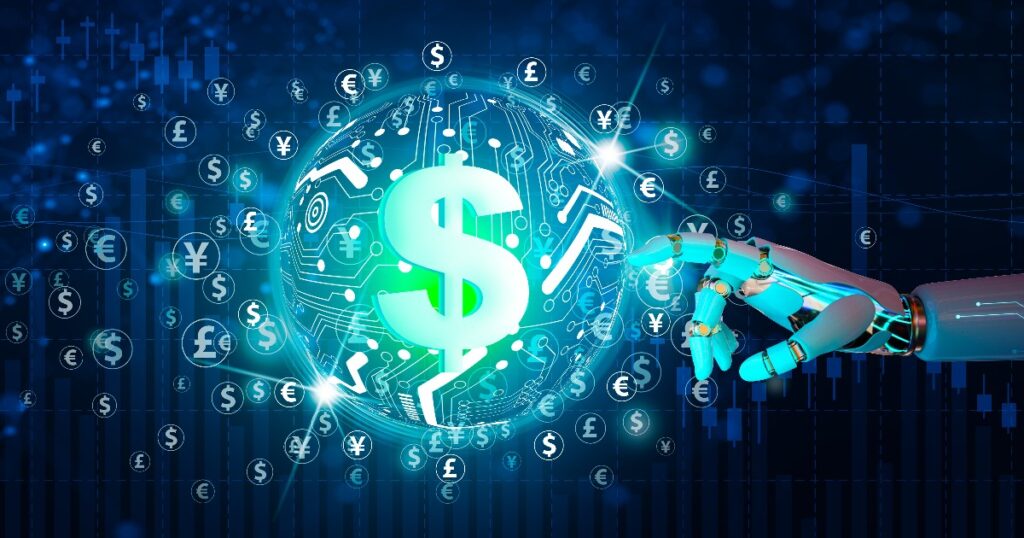Imagine this scenario: A sophisticated, malicious phishing campaign targets a large financial institution. The attackers use emails generated by artificial intelligence (AI) that closely mimic the company’s internal communications. The emails contain malicious links designed to steal employee credentials, which the attackers could use to gain access to company assets and data for unknown purposes.
The organization’s AI-powered cybersecurity solution, which continuously monitors network traffic and user behavior, detects several anomalies associated with the attack, blocks access to the suspicious domains across the network, quarantines the phishing emails, resets passwords for all potentially compromised accounts and sends real-time alerts to the security operations center, providing detailed information about the attack vector and affected systems.
Using predictive analytics, the AI suggests potential next steps the attackers might take, allowing the security team to strengthen defenses in those areas proactively.
The good guys won. But was the AI solution worth the price? What’s the value in dollars of that victory? It’s easy to measure the investment in AI. But how do you measure the return on that investment? Specifically, how do you measure the value of data never stolen, unknown reputational damage that never happened, customer trust never lost or reduced operational risks never incurred?
The rise of AI cybersecurity
To be sure, cybersecurity AI spending is set to increase dramatically. Organizations spent $24 billion in 2023, with an expected rise to $133 billion by 2030. Cybersecurity professionals and the companies they work for will increasingly rely on advanced AI solutions as threats grow and the cost of data breaches also rises.
The challenging nature of cybersecurity ROI is compounded by many other factors — dozens, hundreds or thousands of attempted cyberattacks per year per organization; the lack of universally accepted metrics or calculations for cybersecurity ROI; the long payback period for investments in cybersecurity AI; the fast-changing nature of the threat landscape; the fact that cybersecurity investments also touch areas like operational efficiency, regulatory compliance and others.
Historically, organizations calculated ROI in cybersecurity investments by estimating money saved in the absence of security incidents. But that fails to account for proactive security measures, efficiency gains in operations and the overall security posture. With the integration of AI, cybersecurity has fundamentally changed, offering enhanced threat detection and prevention capabilities beyond simply measuring the absence of incidents.
A proactive approach and improved operational efficiency through task automation provide tangible benefits not captured in traditional ROI calculations.
Explore AI cybersecurity solutions
New metrics for ROI calculation
The use of AI tools has transformed the typical cybersecurity ROI calculation, introducing several quantifiable metrics:
These metrics offer a more comprehensive view of the value derived from AI-powered cybersecurity investments, enabling organizations to make more informed decisions about resource allocation and strategic planning.
Cost savings can also be measured in the aggregate. According to the IBM 2024 Cost of a Data Breach report, organizations extensively using security AI and automation in prevention workflows saved an average of $2.2 million in breach costs compared to those without such technologies.
Still, measuring AI cybersecurity ROI comes with challenges, including difficulty attributing prevented incidents directly to AI, the constantly evolving threat landscape and balancing initial investment costs with long-term benefits.
Taking a holistic approach to cybersecurity AI ROI
Organizations can leverage established frameworks, such as the NIST Cybersecurity Framework, to effectively measure and communicate AI’s ROI in cybersecurity. By aligning AI initiatives with these functions, organizations can more accurately measure their impact on overall cybersecurity performance.
To effectively measure the impact of AI on cybersecurity ROI, organizations should focus on specific Key Performance Indicators (KPIs):
- Mean time to detect
- Mean time to respond
- Security operational efficiency
- Threat intelligence accuracy
- Compliance adherence rate
The best approach is to adopt a more comprehensive approach that uses risk assessment frameworks, measures risk reduction, considers and estimates intangible benefits and regularly reviews and updates calculations.
Organizations must adopt a holistic approach that considers the proactive capabilities, efficiency gains and quantifiable metrics provided by AI-powered solutions. This comprehensive evaluation allows a more accurate assessment of cybersecurity investments’ true value and impact in today’s complex threat landscape.
Of course, cyberattacks don’t happen randomly or in a vacuum. Take the follow-on consequences of the ongoing cybersecurity skills gap, which can be self-enlarging, according to Sam Hector, senior strategy leader of IBM Security.
“When you don’t have enough skilled experts in monitoring and defending your infrastructure, a few things happen,” Hector said. “The time to triage alerts grows as the queue of incidents to review becomes longer, meaning you’re more likely to be breached, and attackers dwell times increase (when they are in your environment undetected) as you’re less likely to find the needle in the haystack. The time to detect increasing directly leads to higher breach costs on average.”
And the problem keeps growing: “Teams that are stretched too thin don’t have the time to devote to improving cybersecurity processes, integration and efficiency,” Hector said. “They’re unable to drill exercises and embark on further training as they’re too focused on keeping the lights on. This means over time, they’re less effective comparable to the threat landscape, and misconfigurations and gaps develop that attackers can exploit.”
Hector said persistent attackers are unlikely to go unnoticed by these weakening defenses: “If there’s a specific industry, region or even organization that is known to be struggling to acquire cybersecurity skills, this puts them at increased risk of being targeted by attackers who will be anticipating weaker defenses.”
An ongoing shift in cybersecurity investment
The integration of AI in cybersecurity has fundamentally changed how organizations approach and measure their security investments. By providing more tangible and comprehensive ROI metrics, AI enables organizations to make data-driven decisions about their cybersecurity strategies. As cyber threats continue to evolve, the role of AI in cybersecurity will only grow more critical, making it essential for organizations to invest in — and effectively measure — the impact of these technologies.
